With the late arrival of winter in 2015, we chose this moderate objective because the snow and thin ice cover left steeper slide objectives out of the question. Our group members were all well equipped with the proper equipment for the winter conditions we were facing (crampons, ice axes, etc), and we all had previous training and experience with mountaineering.
The most popular way to approach the slide is to park at the Garden parking lot outside Keene Valley and use an abandoned trail to get to John's Brook. After reaching the brook, you simply cross it by rock hopping, then walk along the Southside river trail and reach the base of the slide an hour or so later. Unfortunately today John's Brook's river flow was too high to cross with the recent snowfall and rain, so we had to return to the main trail to the John's Brook Lodge area and cross the bridge and then having to backtrack about 1km. In total, this probably added about 1km/0.6miles to our day. Temperatures were slightly above freezing at the base and slightly below freezing at the summit.
The lower sections of the slide were fairly easy to walk without traction devices. As the slide path's ascent angle increased we darted into the trees on the side of the slide (climber's right) and took a short break out of the wind to fuel up, put on crampons, and get out our ice axes.
Our day finished with 17.5km/10.5miles, 3900ft/1200m ascent, in 8hours.

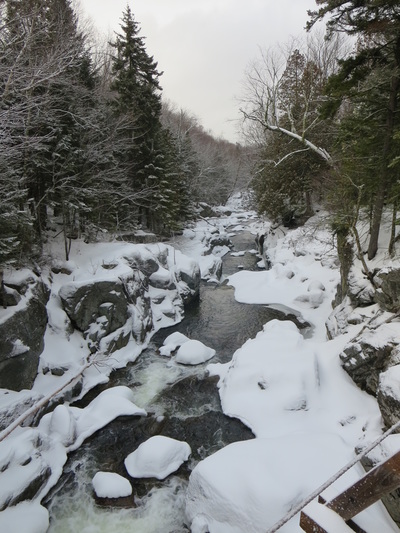
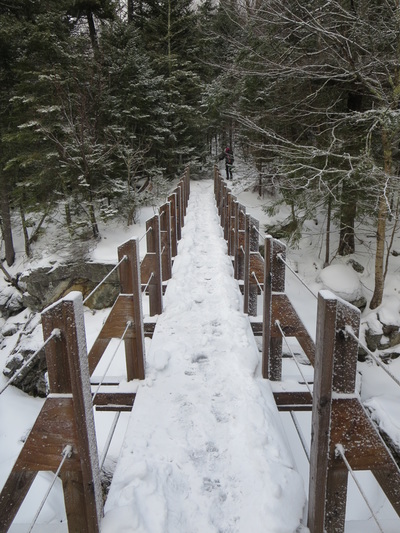
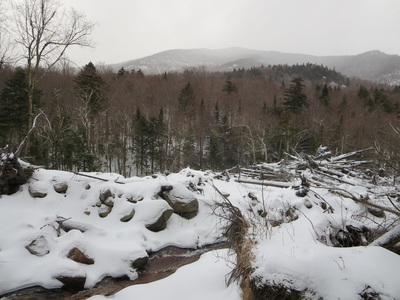
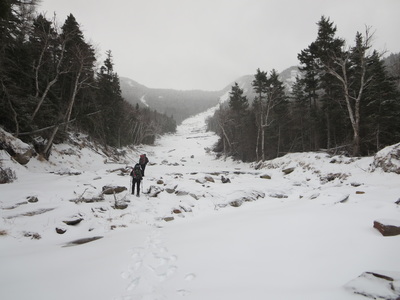
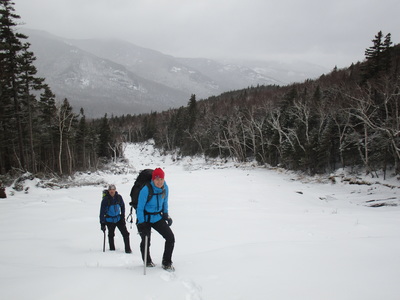
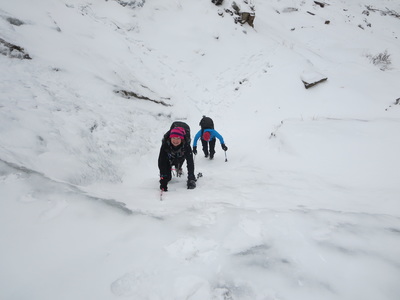
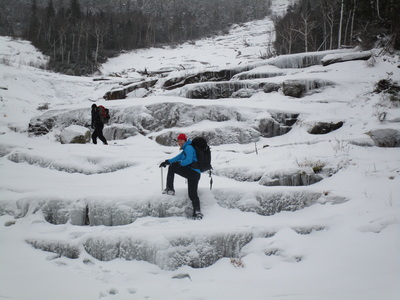
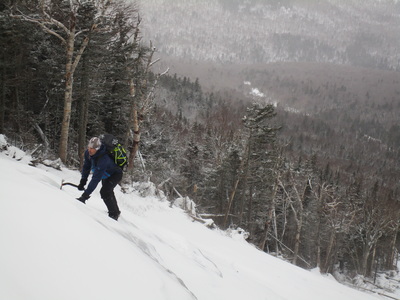
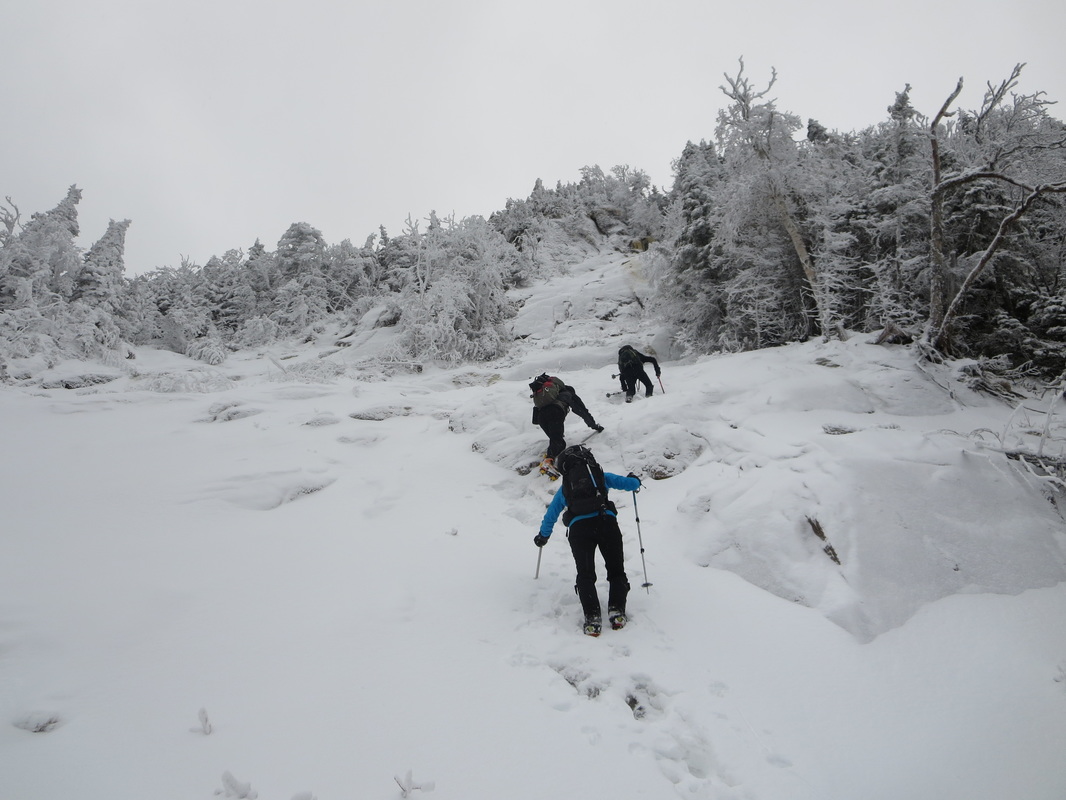
 RSS Feed
RSS Feed


